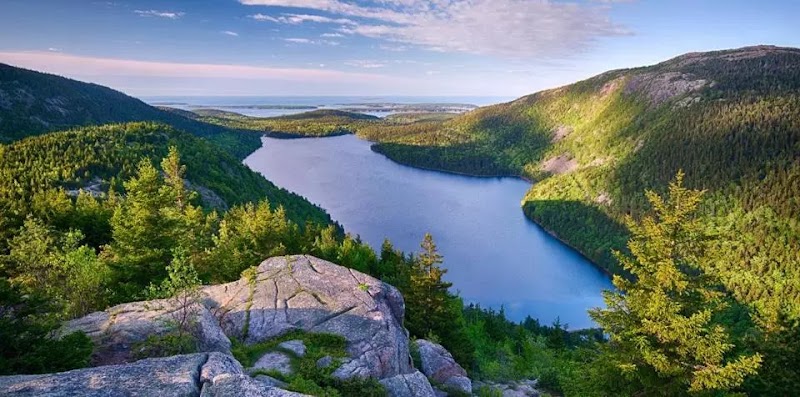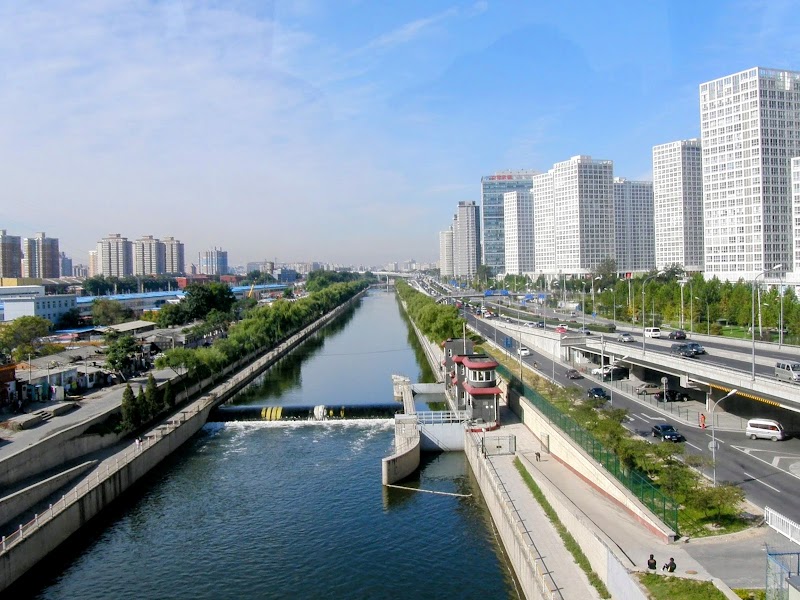Encompassing over 49,000 acres of rugged coastline, dense forests, and majestic mountain peaks, Acadia National Park is a jewel of the Atlantic Northeast, boasting over 2 million visitors each year. From the breath-taking vistas of Cadillac Mountain to the serene beauty of Jordan Pond, and the iconic Bass Harbor Head Lighthouse, this park is a paradise of natural wonders waiting to be discovered.
Planning your journey through Acadia's diverse landscapes and abundant attractions can be as exciting as the adventure itself. The Acadia National Park tourist map is an invaluable tool to visualize your upcoming exploration, providing a comprehensive overview of the park's expansive territory. With this map, you can imagine the experiences ahead, weaving together an itinerary that captures the essence of what Acadia has to offer.
Booking.comUnveiling the Hidden Gems of Acadia National Park
Unlock the secrets and embrace the true spirit of Acadia National Park that extends beyond its well-known attractions. Witness the breathtaking beauty of unexplored trails, the serenity of secluded coves, and the whisper of history echoing through its landscape. Acadia is a trove of experiences waiting to be discovered, each more captivating than the last.
Experience the Tranquility of Little Hunters Beach
As you traverse through the park, you’ll stumble upon the hidden gem of Little Hunters Beach. Nested away from the bustling tourist paths, this pebbled beach is a haven of solitude and serenity. The symphony of rolling pebbles with each wave that retreats back into the ocean tells a tale as old as time. It's proximity to the more popular Hunters Beach makes it perfect for a quiet escape after a busy day of exploration.
Explore the Depths of The Bowl
Challenge yourself with a hike to The Bowl, a serene mountaintop pond. This less-traveled path offers an intimate connection with nature that’s hard to find elsewhere in the park. As you ascend, take a moment to appreciate the raw beauty of the rugged terrain. The reward at the summit is a tranquil pond, a sanctuary for native wildlife. It's an ideal spot to unwind after the adrenaline rush of the climb. While there, don't miss the nearby Beehive Trail, another thrilling adventure that awaits you in the tourist map of United States.
Immerse in the History at Islesford Historical Museum
Located on Little Cranberry Island, the Islesford Historical Museum offers a poignant insight into the lives of the island's early settlers. Delve into the local history, explore ancient artifacts, and lose yourself in stories that span centuries. The museum's picturesque coastal location makes it a perfect blend of education and scenic beauty. It's an unexpected cultural immersion in the midst of Acadia's wilderness.
Experience the Wilderness at Schoodic Peninsula
Escape the crowds and venture into the untamed beauty of Schoodic Peninsula, the only part of Acadia National Park located on the mainland. It’s a slice of solitude where rugged cliffs meet the roaring Atlantic, offering splendid isolation for those seeking tranquility. The drive along the peninsula is a journey of stunning vistas, with each turn unveiling a new spectacle of nature's grandeur. It’s Acadia’s wild, untamed side, presenting an enchanting blend of land, sea, and sky.
Discover the Magic of Wild Gardens of Acadia
Discover the enchanting Wild Gardens of Acadia, a sanctuary that houses over 400 native plant species. Meander through the winding paths, immerse in the fragrance of blooming flowers, and witness the harmonious coexistence of diverse habitats. It's an unexpected oasis of tranquility amidst the rugged wilderness of Acadia. A visit to these gardens is a journey of sensory delight, a testament to Acadia's ever-surprising diversity.

Practical Information for Acadia National Park
Transportation and Mobility
When it comes to getting around Acadia National Park, the Island Explorer Shuttle Bus Service is a convenient and eco-friendly option. It operates from late June to Columbus Day, connecting various important points within the park, and the service is free of charge. Renting a bike or car can be a flexible option, but remember that parking spaces are limited during peak season. Car reservations may be required for Cadillac Mountain from May 26 to Oct 19.
Schedules and Prices
Acadia National Park is open 24 hours a day, all year round, but certain facilities and services operate seasonally. The Park Loop Road, for example, is open from April 15th through November. As for the entrance fees, a private vehicle pass costs $30, individual pass (on foot, bicycle) is $15, and the motorcycle pass is $25. These passes are valid for seven days. The annual pass for unlimited visits is priced at $55.
Safety Tips
While exploring Acadia National Park, visitors should remain aware of their surroundings. Always stay on marked trails to protect the park's fragile ecosystems and your own safety. Wildlife such as deer, foxes, moose, and even black bears can be encountered, so keep a respectful distance. During winter, be prepared for icy conditions and sudden weather changes. It is recommended to carry enough water, use sunscreen and insect repellent, especially in summer.
Practical Recommendations
Acadia National Park is a popular destination, so it's recommended to plan your visit early in the morning or late in the afternoon to avoid crowds. Summer and fall are the busiest seasons. If you're planning to camp, make sure to book your campsite well in advance. Lastly, remember to carry a map and a reliable compass, as cell service may be spotty in certain areas of the park.

Frequently Asked Questions about Acadia National Park
1. Can I bring my pet to Acadia National Park?
Yes, pets are allowed in Acadia National Park, but there are specific rules to follow. Pets must always be on a leash not exceeding six feet in length and are not allowed on ladder trails, inside public buildings, or on ranger-led programs. Be sure to clean up after your pet and dispose of waste in trash receptacles. Remember, it's crucial to respect the park's natural habitat.
2. What unique wildlife might I encounter in Acadia?
Acadia National Park is home to a variety of wildlife, offering a unique opportunity for nature enthusiasts. You might spot white-tailed deer, moose, foxes, and a variety of bird species. However, please remember to observe all wildlife from a safe distance and never feed the animals. It's important to respect their natural behavior and habitats.
3. Is there wheelchair access in Acadia National Park?
The park is committed to making facilities, services, and programs accessible for all visitors. Wheelchair-accessible trails and facilities include the Jordan Pond Path, the Wild Gardens of Acadia, and the Sieur de Monts Nature Center. However, due to the park's natural terrain, not all areas are wheelchair accessible. Always check with park information centers for the most up-to-date accessibility information.
4. Can I camp in Acadia National Park?
Camping is a fantastic way to truly immerse yourself in the stunning landscapes of Acadia, but it's important to know the rules. The park has two established campgrounds: Blackwoods and Seawall. Both campgrounds require reservations, which can be made online. Remember, wild camping is not permitted in the National Park to protect its delicate ecosystems.
5. How can I best respect the environment during my visit?
Visitors play a critical role in preserving the park's natural beauty. Stick to designated trails to avoid damaging plant life, and always carry out any litter. If you're camping, use designated campgrounds and keep fires in provided fire rings. Remember, the park is home to many species of wildlife, so keep a respectful distance and never feed the animals.
6. What's the best time to visit Acadia National Park?
Acadia National Park offers a unique experience in every season, but the best time to visit depends on what you want to do. Summer offers warm temperatures for hiking and camping, while fall brings stunning foliage colors. Winter, though cold, transforms the park into a tranquil snow-covered wonderland ideal for cross-country skiing and snowshoeing. Spring can be wet but offers fewer crowds and the beauty of wildflowers in bloom.








